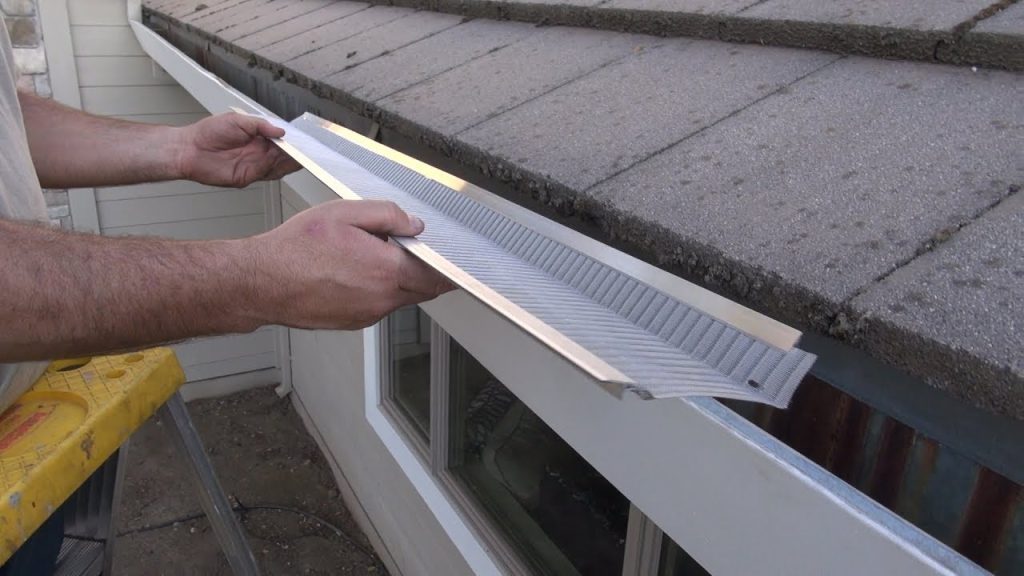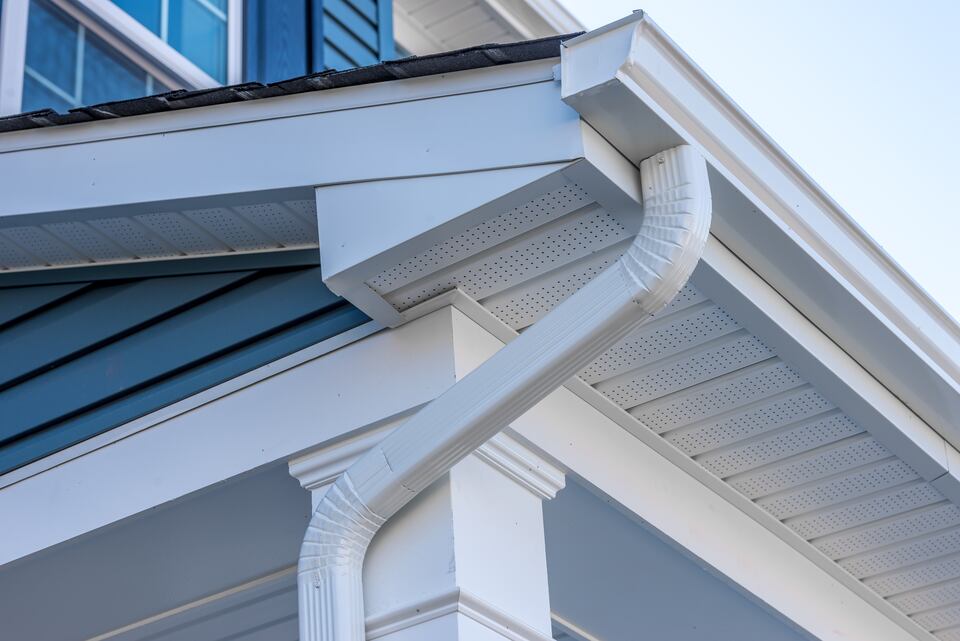When it comes to maintaining your home, gutters play an essential role in protecting your property from water damage. Gutters channel rainwater away from your roof and foundation, helping prevent costly repairs down the road. However, gutters can become clogged with leaves, twigs, and other debris, which can lead to water overflow, leaks, and even structural damage. While professional gutter cleaning services are always available, many homeowners prefer taking a DIY approach.
In this guide, we’ll walk you through everything you need to know about DIY gutter maintenance, providing you with the tools and techniques you need to keep your gutters clean, functional, and in good condition.

Why DIY Gutter Maintenance Is Worth It
While gutter maintenance may seem like a simple task, it’s often overlooked until problems arise. Taking a proactive approach to cleaning and repairing your gutters can help you avoid:
- Water Damage: Clogged gutters cause water to overflow, which can lead to water pooling around the foundation and damaging your basement, landscaping, or even causing erosion.
- Pest Infestations: Standing water in gutters can attract pests like mosquitoes, rodents, and termites.
- Roof Damage: Overflowing gutters can lead to roof leaks and damage to your shingles.
- Frozen Gutters in Winter: If you live in a colder climate, clogged gutters can cause ice dams to form, which can damage both the gutters and the roof.
By taking care of your gutters on a regular basis, you can save money and time on repairs. DIY gutter maintenance allows you to stay ahead of the curve and ensure your home is protected year-round.
Essential Tools for DIY Gutter Maintenance
Before you dive into cleaning or repairing your gutters, it’s important to have the right tools on hand. Here’s a list of essential tools that will help make the job easier and safer:
- Ladder: A sturdy ladder is crucial for reaching your gutters. Ensure that it’s tall enough to reach your gutters comfortably and that it’s stable.
- Gloves: Wear heavy-duty gloves to protect your hands from debris, sharp edges, and potential cuts.
- Trowel or Scoop: These tools help you remove debris from the gutters. You can also use a plastic spatula or small shovel.
- Bucket or Trash Bag: For collecting debris as you clean the gutters.
- Garden Hose: After you remove debris, you can use a garden hose to flush out the gutters and downspouts, ensuring proper water flow.
- Gutter Guards (Optional): If you want to prevent future clogs, consider installing gutter guards or covers that filter out debris before it enters the gutter system.
How to Clean Gutters Step-by-Step
Cleaning your gutters isn’t a complicated task, but it does require some patience and careful attention. Follow these steps to clean your gutters safely and effectively:
1. Prepare the Area
Start by clearing the area around your house so you have plenty of space to move the ladder around. Be sure to have your ladder in a stable position. It’s also a good idea to lay down a tarp or plastic sheeting on the ground to catch any debris that falls from the gutters.
2. Climb the Ladder Safely
Position your ladder at a comfortable angle (usually about 75 degrees). Always make sure the ladder is stable and positioned on flat ground. Never overreach while on the ladder—move the ladder as needed to avoid leaning too far to one side.
3. Remove Debris
Using your gloves and trowel, begin removing debris from the gutters, working your way from one end to the other. Be sure to remove any leaves, twigs, dirt, and other debris. If you encounter any stubborn buildup, try using a garden scoop or spatula to loosen it.
4. Flush the Gutters with Water
Once the gutters are free of large debris, use a garden hose to flush out the remaining dirt and grime. Start at the end of the gutter farthest from the downspout and work your way toward the downspout. This will help you ensure that water flows properly and doesn’t pool in the gutters.
5. Check the Downspouts
Water should flow freely from the gutters into the downspouts. If you notice that the downspouts are clogged, you can use the hose to spray water into them or use a plumber’s snake to break up any obstructions. For stubborn clogs, you might need to remove the downspout completely to clear the blockage.
6. Inspect for Damage
While cleaning, take a close look at the gutters for any signs of damage, such as cracks, rust, or loose brackets. Small holes can often be patched with a silicone-based sealant, while larger issues may require gutter replacement.
How to Repair Your Gutters
If you spot any minor damage during your cleaning, such as a small hole or a loose bracket, you can often make a quick repair yourself. Here’s how:
1. Fixing Leaks and Holes
For small holes or leaks, you can use a silicone-based sealant or gutter repair tape. Clean the area around the hole first to ensure good adhesion. Apply the sealant over the hole and let it dry before testing for leaks. For larger holes, you may need to replace a section of the gutter.
2. Replacing Broken Hangers or Brackets
If a hanger or bracket has come loose, it can cause your gutters to sag. To fix this, remove the damaged hanger, replace it with a new one, and use screws to secure it to the fascia. This will ensure that your gutters stay in place and continue to function properly.
3. Fixing Sagging Gutters
If your gutters are sagging due to loose hangers or an uneven slope, you can fix this by adjusting the hangers or adding new ones. The ideal slope for gutters is about 1/4 inch for every 10 feet of gutter, allowing water to flow toward the downspouts.

Prevent Future Problems with Gutter Guards
To prevent debris buildup and reduce the frequency of gutter cleaning, consider installing gutter guards. Gutter guards act as a protective shield, allowing water to flow freely while blocking larger debris, such as leaves and twigs. There are several types of gutter guards available, including mesh, foam, and reverse-curve designs, so you can choose the best one for your home.
Safety Tips for DIY Gutter Maintenance
Working on your gutters can be dangerous, so it’s essential to prioritize safety. Here are some tips to ensure you stay safe while cleaning and maintaining your gutters:
- Use a Stable Ladder: Always make sure your ladder is stable before climbing. Avoid leaning to one side or stretching too far.
- Work with a Partner: If possible, have someone assist you by holding the ladder steady or passing you tools while you work.
- Wear Protective Gear: Wear gloves, a long-sleeved shirt, and safety goggles to protect yourself from debris and sharp edges.
- Avoid Working in Bad Weather: Never attempt gutter maintenance during bad weather, such as heavy rain or high winds.
When to Call a Professional
While DIY gutter maintenance is great for homeowners who are comfortable with the task, there are times when it’s best to call a professional, especially for larger issues. If you notice extensive damage, need a gutter replacement, or are unsure about how to address a problem, don’t hesitate to contact a professional roofing company like Atlas Roofing & Restoration. Our team of experts can assess the situation and provide reliable, cost-effective solutions for your gutter and roofing needs.
Conclusion
DIY gutter maintenance is an essential task that every homeowner should include in their regular home maintenance routine. By cleaning and inspecting your gutters, you can prevent costly repairs, protect your home from water damage, and ensure your gutters continue to work as they should. Remember to use the right tools, follow safety precautions, and always keep an eye out for any signs of damage. If you need help or are unsure about any repairs, the experts at Atlas Roofing & Restoration are here to help. Contact us today to schedule a consultation!




